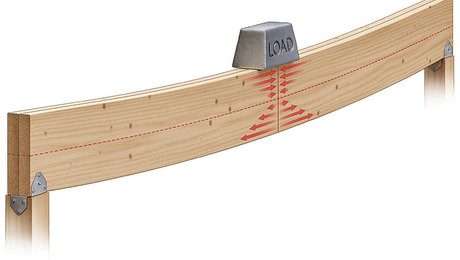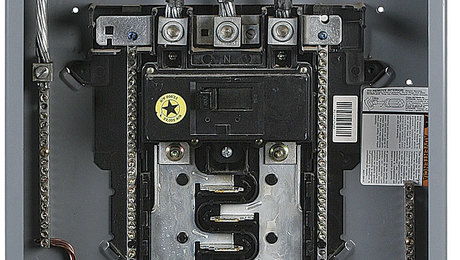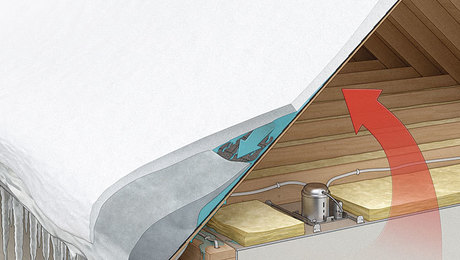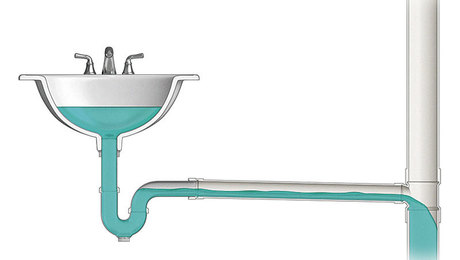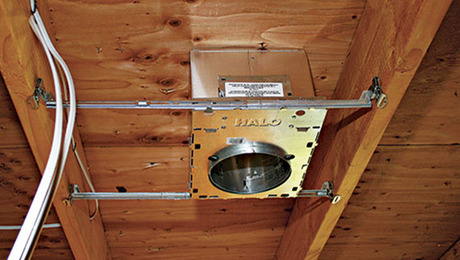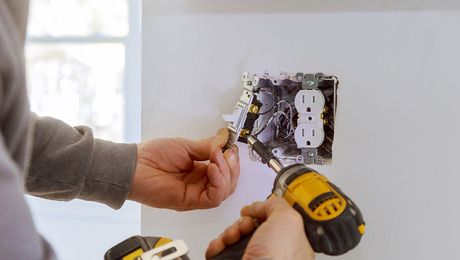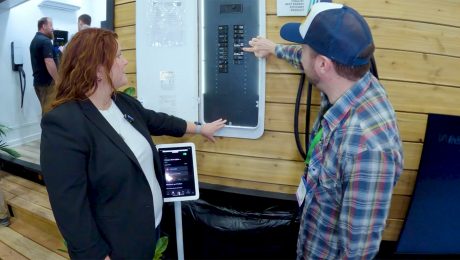How it Works: Grid-Tied PV Systems
Most photovoltaic (PV) systems are tied to the power grid, which means that any surplus is fed back into the grid, and any deficit is supplied by the grid.
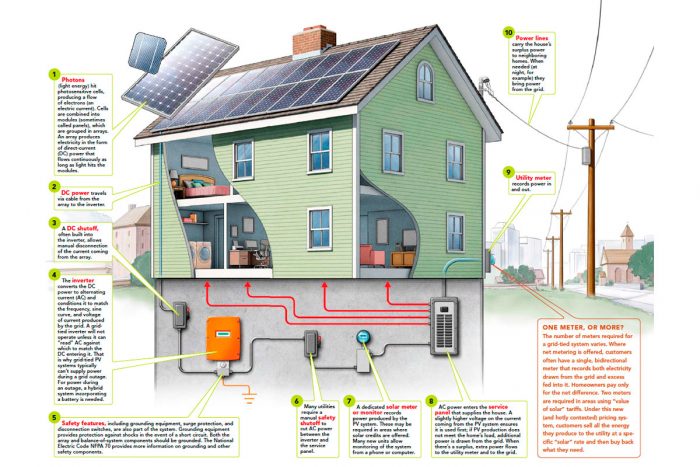
Synopsis: The number of homes with photovoltaic (PV) systems is growing. Most of these systems are tied to the electric grid, which means that any surplus is fed back into the grid, and any deficit is supplied by the grid. With help from a detailed drawing, managing editor Debra Judge Silber shows how a grid-tied PV system works, beginning with the photons that hit the cells in a PV panel and produce a flow of electrons, and ending with the power lines that connect the home to the grid.
If it seems like more and more roofs in your neighborhood are sprouting shiny black photovoltaic (PV) arrays, you’re not alone: In 2013, the number of home PV installations in the United States grew 60%.
While some home PV systems operate independent of the electrical grid, grid-tied systems are far more common. Electricity produced by these systems is used first to satisfy the home’s load; any surplus is fed into the utility-maintained grid. When the system is not producing electricity (at night, for example) the house draws power from the grid like any other home.
Distributed generation (DG) is the feeding of electricity into the power grid from multiple locations. DG is a hot topic right now, as the popularity of PV has generated fierce debate between home-power advocates, utilities, and regulators over pricing, regulations, and connection requirements.
The conversion of light to electricity occurs in a solar cell the size of a CD case, but the process doesn’t end there. It is the “balance of system” equipment that conditions, monitors, and distributes that power so it can be used to run your TV, computer, and refrigerator (as well as your neighbors’). These components are what make PV power practical.
For a step by step graphic on how grid-tied PV systems function, click the View PDF button below.
